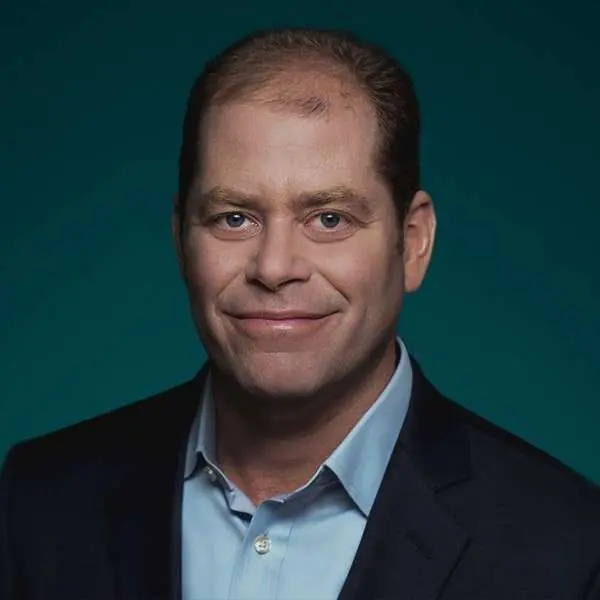Thematic Investing: Future Growth Opportunities With Scott Helfstein
Welcome to Season 3, Episode 1 of Meet the Expert® with Elliot Kallen!
Thematic Investing navigates the future Growth landscape, recognizing that key segments of the Economy are crucial for future development. In this episode, we look into the fascinating world of thematic investing with Scott Helfstein, the Head of Thematic Solutions at Global X ETFs. From AI to infrastructures to defense Technology, Scott sheds light on the approaches and impressive technological advancements in companies that will not only be a significant part of our future economy but also could lend insights into your portfolio-building process. He then discusses the geopolitical landscape, touching on Cybersecurity and the ongoing technological race with China. Throughout the episode, Scott offers a nuanced perspective on each theme, providing you with a comprehensive understanding of the investment opportunities within these dynamic sectors.
Read More: (insert link to the episode)
Free Consultation: https://prosperityfinancialgroup.com/book-your-appointment/
Visit Us: https://prosperityfinancialgroup.com/
We understand—you’re busy. Between work, family, social, and personal life, it’s all too easy to be consumed by daily duties and lose sight of your financial priorities. But compromising on your financial dreams isn’t an option. That’s where we come in.
At Prosperity Financial Group, we’ll take care of your investment, Retirement, and wealth management strategies so you can show up as the best version of yourself in your work and personal Relationships. Our remote service structure enables us to help you from anywhere, anytime. Get started: https://prosperityfinancialgroup.com/book-your-appointment/
Watch the episode here
Listen to the podcast here

Meet Our Guest
Scott Helfstein
Thematic Investing: Future Growth Opportunities With Scott Helfstein
This is different. It’s for the investor. It’s understanding how to invest in themes. We, as a financial planning and investment advisory firm, do that every day that week with portfolios. We pick themes, like choosing with Wayne Gretzky’s where the puck is going instead of where it’s been. We want to be in front of the puck. We can get there much faster and score more goals on behalf of our clients.
We have Scott Helfstein. He is with Global X. It is a $40-plus billion Money management firm in Midtown Manhattan. He’s got an interesting background. He has several years as a West Point professor. I’m not sure if he’s the professor you’d want to have or if he is the professor everybody tries to avoid, but he could explain that on his own. He has a PhD in Public Policy and Politics from Michigan. Welcome to the show, Scott.
Thanks for having me, Elliot.
Let’s talk for a moment. This is understanding themes of investing. Why is that important? I’m going to ask you that, but for our clients, because when we build portfolios, and we have multiple portfolios that we build for our clients, thematic theme investing is paramount to our thinking. Why don’t we start by understanding what the heck is thematic investing?
You set it up perfectly with your introduction. It’s about where the puck is going, not where it’s been. We talk about themes as though they’re high-growth opportunities, and in many cases, they might be, but they’re not exclusively. When I think about themes, I think about segments of the economy that are truly important to growth in the future but may not be easily accessible by traditional frameworks, whether it’s a growth value type thought process or sub-industry.

An example that I frequently use is, within sector investing, you have airlines that sit in industrial and hotels that sit in consumer discretionary. During COVID, we learned that those two things were highly correlated, yet they sit in entirely different sectors. If you believe cybersecurity, which has twenty-plus companies that you can invest in, is a significant part of the future of the economy.
I’m happy to talk about why there is no good way in the traditional sector framework to invest in it. You can invest in software, in which case you get Microsoft, Adobe, and a whole bunch of things that don’t have to do or don’t make a lot of money from cybersecurity in and of itself as a unique field. It’s about where the puck is going.
What we can now do, whereas we used to have to pick one or two stocks, is keep our fingers crossed and hope we were good at that game. The evolution of themes is such that ETFs provide a good wrapper to select not 1 or 2 but a whole basket, 20, 30, or 40 companies that are tied to an area of future growth and of the future of the economy. That is where the puck is going. That’s how I think about thematic investing. The economy is at point A now. It’s moving to point B. The themes are the things that are going to bridge from one place to the next.

That’s great because we love it in our portfolio building, and we’re going to talk about a few different themes, including cybersecurity, which we are bullish on. I want to remind everybody about bullish and bearish. Bullish means we think it’s going to grow. Bearish means we’re scared about it. It’s like going out in the middle of the winter with a light jacket on. You wish you wore a heavier coat because you’re getting killed by the cold air, and that’s what bearish is.
Let me talk for a moment about some of those themes which are popular. The Artificial Intelligence theme seems the only one that made money. Seven stocks are touching artificial intelligence. I have a few questions about that. One is, why didn’t anybody predict that as we went into the year? Two, how come they did well? Three, I’ve got a few follow-ups. Let me start with those two.

Let me push back on one right off the bat, which is that AI was tied to the magnificent seven or the seven mega-cap stocks, and they had a tremendous year. There are a couple of different ways to look at indexes. What is printed in the newspaper is the market weight for the index. That’s where the larger the company is, the more that they influence the level of the index. You can also equal weight these indexes, as you all know.
Interestingly, the NASDAQ, which tends to have more growth stocks than the S&P 500, outperformed as you would imagine because of those magnificent seven. The NASDAQ equal weight also outperformed the S&P 500 market cap weight. It wasn’t a story of the seven. It’s been a return to growth investment. Those seven certainly dominated the headlines, but even when we cut them back to 1% each of the 100 stock index, that index still did well.
Part of that is because, in 2022, many of these growth-oriented themes, including many companies tied to AI, struggled as interest rates went up. We wrote a piece last November 2023 called Entry Points in Burning Buildings, where we Stress that themes tied to automation, whether with software like AI or industrial robotics, could do well. We’ve seen that it hasn’t been AI, but more broadly, the way I like to think about it is themes tied to automation have done well. Robotics and artificial intelligence did well. The Internet of Things began recovering. These are the sensors and processors. We can talk about each of these in more detail.
The theory starting behind 2023 was that inflation, particularly high increases in producer prices, that’s the PPI index, would basically impact the profitability of companies and force them to cut spending in many of these areas. Companies, it turns out, have been investing in these automation digitalization technologies during the pandemic, and we’re seeing the benefits. They managed to operate only, passing on half of that inflation to the consumer. While the consumer was paying at its peak 8.5% higher costs or higher prices year over year, companies were double that. What we’ve now seen for three quarters is that CapEx spending, this is corporate investment, has grown double digits on a year-over-year basis and has outgrown earnings per share.
One of the reasons why we’ve seen AI, but I think about it more broadly as automation themes pull away in 2024, is because companies are investing in a way that they haven’t in the last several years. The only people who invested in the last several years were those magnificent seven, those mega-cap tech companies you mentioned at the outset.
What we’ve now seen over the last few years is that the returns or the benefits from corporate investment for everybody else have gone up. For those mega caps, it’s gone down. It’s not an AI-driven rally. AI is an important part of it, as are hardware, software, and data. It’s about corporate investment in these automation technologies that drive efficiency for the future.
AI is an important part of IT, hardware, software, and data, but it’s really about corporate investment in these automation technologies that drive efficiency for the future.
Scott, we’re talking about themes and sector investing. People are talking about a recession coming in the fourth quarter of 2022, 2023, and 2024. Interest rates may be peaking or not. There’s a lot happening out there. Is it too late to be into sector investing?
If we’re going to focus more narrowly than sectors on themes, it’s still a great market for that. We were more bullish than most people to start 2022 for the reason that you mentioned. We have now kicked out our estimates for a recession several months out. We are not forecasting that. That is a consensus number that keeps getting pushed out.
What happens is those forecasts keep flattening. We’re not talking about necessarily going to 0% growth. We’re now hovering somewhere between zero and one. By the time it’s all said and done, we might wind up with some slow growth, around 1% or 2%. That said, we’ve also now seen a market that’s been driven by earnings growth over the last number of years.
Over the last several years, earnings per share have grown at about 80%. Historically, the three-year average for earnings growth has been 40%. The gains in the market have not been driven by expectations. They’ve been driven by actual corporate performance. That tends to shift back and forth. If the Fed is going to peak in its hiking cycle and if companies can get back to positive operating leverage, which is when earnings grow faster than sales, we haven’t seen that for the last few quarters, but that’s the normal condition, it might well be that investor sentiment shifts in a more positive way towards equities. As you well know, there’s over $6 trillion in record cash sitting in money market accounts. It doesn’t take a lot to nudge that out and go searching for opportunities and equities.
Within themes, 2022 was a brutal year for investors that lost money broadly in stocks and you lost money broadly in bonds. What it also did was hit the reset button on valuations of a lot of the most interesting themes, like industrial automation, cloud computing, and cybersecurity. Many of these are not necessarily priced to perfection as the way they were several years ago. Both were still more bullish than consensus across markets, but more importantly, within certain growth areas of the market, we think there are tremendous opportunities at reasonable crisis.
You mentioned that sector investing is different than thematic investing. What’s the difference?
The S&P 500 is broken up into eleven sectors. It doesn’t work out this way, but that would mean roughly about 50 companies per sector. You have these broad categories like information technology. Within that, there is hardware, which can be semiconductors or can be data storage. There’s also software, which can be software service or some other type. Similarly, within consumer discretionary, as I mentioned before, you have hotels and hospitality, and you also have cars and consumer goods like sporting goods.
There are these broad categories of the economy that might work or not. In themes, we can say, “Here are twenty companies that make most of their revenue from cybersecurity. Here are several companies that make their money from defense technology.” You’re not getting defense and aerospace. You’re focused more on the defense area. It allows us to target more efficiently than straight sector investing, which is a cottage industry of both bracket Wall Street strategists, overweighting and underweighting, these eleven broad categories of the economy.
You mentioned a few themes here. If you don’t mind me, I’m going to pick your brains on these themes if I could. We’ll talk about the ecosystems, why you like them, and why we have them in our portfolios coming into 2024. If I could, I would pick your brains because our clients are going to pick our brains, and these are good questions. The number one ecosystem out there is AI. It’s on the front page every morning on Fox Business and CNBC. Let’s talk about the big AI companies. Did Microsoft finally win? Is Google winning? Who’s winning these fights? Should we still be in AI since they had a good year in 2024?
It’s still early days for AI. That’s one of the reasons why I am not going to go and predict a winner or loser. One of the advantages that ETX provides is that it offers a basket. We don’t necessarily need to be heroes. We don’t need to pick the right one. We get exposure across the universe. You mentioned Microsoft, with its partial ownership of OpenAI and ChatGPT, seems to have pulled ahead, and yet Google is preparing to release its Gemini software, which is trained on the largest database ever, which includes up-to-date Google search data. We don’t think that this is nearly over. Those are two that make that press a lot.

There’s also AI software being developed for more targeted tasks like Finance or human resources, certainly sales force and customer engagement. All of those are niche. You’ve got your big overarching models, but we don’t necessarily see AI as a consumer-led revolution. The way that this object we all carry around in our hands has been like a new food delivery app or a language learning app popped up, and it was right available on our screen.
AI is more likely to be a corporate-led technology where the benefit is in finding business efficiencies and driving margins both to automate and reach customers more efficiently through digital means. To that end, we think it’s going to take time for companies to identify which aspects of this technology work for them and to be able to bring those online and improve their profitability. This is the beginning of a multi-year cycle.
The way we think about AI, or at least one way that people talk about it, is hardware, software, and data. This is where you can think about an entire ecosystem. Hardware is certainly your processor, like Nvidia or AMD, but AI is also generative AI in particular. It creates new knowledge pictures and audio files and is much more data-heavy than the conventional rules-based selection, where we start with a big database and the Netflix engine tells us what three things we want to watch.
This is creating a lot more data. One area to consider is something like data center REITs, and that’s a data storage argument. We thought there could be overcapacity, but now the expectations for computer-generated data exceed that of human-generated data about four years from now. There is a big opportunity there.
A second hardware area to consider is what I think of as the connective tissue between the physical world that we live in and the digital world that computers understand. This is where the Internet of Things or sensors and processors that are not fancy come in. They’re low-energy processors, but we’re talking about things like visual systems, pressure sensors in factories, temperature sensors in factories, light, and all of those things are critical to sending conditions for machines to make decisions. Those are critical data inputs.
We don’t want human intervention. We want to be able to create these connected worlds. The Internet of Things is another interesting area. Related to all that is industrial automation, robotics, and the integration with artificial intelligence. We’re talking about things like onshoring, nearshoring, increased global competition, more resilience in our supply chains, and the CHIPS Act, $600 billion that’s going to go into facilities. That’s going to help to bring more automation of high-tech materials on shore. It’s robotics and artificial intelligence.
You can think about the pure software implementation. Those are your algorithm makers. Microsoft and Google are among the most noticeable, but certainly not exclusive to that. There are a number of smaller companies that are developing interesting technologies. Finally, one that’s not talked about a lot is cloud computing, which I argue that cloud computing, in many ways, becomes the distribution network for these artificial intelligence algorithms.
If you think about the pharmaceutical industry, they don’t do a lot of R&D. The little pharma does the R&D and gets technologies close to market. They buy it because they have scaled sales forces, an existing customer base, and production capability. What do cloud companies already have? Existing distribution networks, client bases, and scale processing capabilities. Those companies that might not be Microsoft and Google but an entire other universe are the ones that bring AI to corporations and the end clients. That’s what we mean when we talk about the AI ecosystem. It’s not about 1 or 2 companies.
If I can get a few more themes, that is infrastructure. The Federal government has passed a series of bills improving infrastructure. They’ve ballooned the US debt. That will decide if that’s out of control in a couple of years, but it’s high. Is infrastructure a place where we want to put our money?
I like infrastructure because, in the face of a potential economic slowdown, not a recession, you’ve already got significant amounts of government money to come online for infrastructure development. The way we think about infrastructure is a picks-and-shovels approach. We’re talking about industrial equipment makers, materials companies, construction and engineering firms. We’re not talking about the old line stodgy infrastructure where somebody owns a port and gets a royalty or owns a toll road or a toll bridge and maintains it and gets a royalty. We’re talking about the people that are building these things.
The $1.2 trillion in the US infrastructure bill goes to infrastructure for these types of companies over the next several years. On top of that, you mentioned multiple bills. The other one relevant is the CHIPS Act. It’s $300 billion of public money that has $300 billion of matching private funds. The infrastructure spending in the United States is going to be 50% higher than what people thought because semiconductor companies don’t build semiconductor plants. Who does? Industrial equipment makers, materials companies, and construction engineering firms build them. They don’t operate them. Semiconductor companies do this after they come online.
The infrastructure spending in the United States is going to be 50% higher than what people thought.
If you factor in that $1.8 trillion spent over several years, that’s a significant revenue boost to many of these companies who are starting to see, if we look at their earnings releases to the investor community, they’re starting to see the benefits of that money come into their financials and even more importantly, come into their future guidance. As those companies see that money comes online and they guide up, that could be a tailwind for them.
Not only that, but 2024 is an election year, Elliot. What are the Democrats going to run on? What’s their signature piece of legislation? It’s infrastructure. What are the Republicans going to say? Trump wanted it first. It was bipartisan when it passed. It’s hard to imagine that either side is going to run against that. Part of it is the CHIPS Act, which has to do with nearshoring and the competitive environment with China. Both parties will likely try and out-hockey each other on the China story. If anything, we might hear about more funds coming online to deal with increased competitiveness and resilience relative to global competition. For a number of reasons, macro fundamental and geopolitical infrastructure could be well positioned.
We’ve come up with three great themes that we use in our portfolios. AI infrastructure and robotics, which is also BOTZ. There are two more I want to ask you about, and I appreciate you being on here. That is, we’re at war. We are in a war in Ukraine, helping them out. We do not have troops on the ground. We’re in a war in the Middle East without troops on the ground. We’re going to put another $21 billion into the Middle East defense technology.
These are old companies that make amazing products in support of the United States military. They are amazing products. They’re staggeringly amazing if we understand what they are, but they’re old. We put them in a value world because they give out 4%, 5%, and 6% dividends. They’re boring. No one cares about McDonald Douglas unless you’re in that world. No one cares about Boeing except that I want my plane to get me from San Francisco to Minneapolis. I don’t care about a Boeing bomber. Is the defense technology industry a place where you can make money?
It’s something that I’ve tracked for a long time, with my history at West Point and serving as Research Director for the Army’s Combating Terrorism Center. It is an area, but investors have to understand some of its idiosyncrasies. These companies are profitable. Elliot, to the point you made, they’re some of the most impressive technology companies in the world.
I went to the USA conference. It’s the largest land power event in Washington, DC, this past October 2024. They take everything from tanks, rocket launchers, helicopters, and drones, and they put them on display on two different floors. You walk around, and it is mind-boggling. Not only are these things state of the art, but many of them are now built with digital twins with hundreds of thousands of parts that exist in virtual reality. When they have to be fixed, engineers can practice fixing them ahead of time and understand the machinery of it better.
You talk about putting autonomous capabilities online. There are more unmanned, not aerial vehicles, but now land vehicles that are coming online. All of these can potentially be controlled in a swarm technology using both human intervention and computer-supported algorithms. We can think about some of these names as stodgy, but they are at the cutting edge of technology.
Given the fact that we have multiple conflicts, you did not mention China, and it’s hard to see relations with the United States and China warming meaningfully, even though there is a temporary thaw here potentially after Xi and Biden’s visit together in San Francisco. In the long term, the interests are not necessarily completely aligned. It’s not about Israel and Ukraine. We want to be thinking about China.
The one caveat I would offer is that investors tend to presume because we go to war or someone goes to war and we’re supporting them. These companies are suddenly going to get a big revenue boost. You have to remember. When you’re producing 5 or 10 $4 billion high-tech jet planes a year, you’re not doubling that number.
These are long-term contracts. They’re stable. When you are supplying missiles, we’re going to have to renegotiate the missile contract and add some missiles. There’s also a limit as to how much can be added. These companies have been traditionally quite profitable. They are on the cutting edge, but investors shouldn’t necessarily expect to see a 30% to 40% pop. These are things that are going to continue to grow. They’re great to have in your portfolio. There are elements of it, like cybersecurity and defense contracting, that are leaner and meaner. We’ll see more revenue support as conflicts heat up. There are these stable defense contractors on the leading edge.
You mentioned China. The fifth theme that I’m excited about is cybersecurity. Let me quickly follow up on what you said because I respect that you have been at West Point. We’re big fans of the US military and the armed services. We’re not somebody that fights you. We’re at a defacto state of war with China, certainly, an economic war, if not a military war. Ukraine is a defacto state of war with Russia, and we’re practicing Ukraine. Unfortunately, people die. It’s the same thing with the dome in Israel and the carriers that we have there. There are a lot of things we’re learning from, and the US uses that.
You mentioned China and this incredible event that you go to in Washington, DC. Aren’t we giving away all of our secrets by doing that? China and Iran are smart people. They’re not dumb people saying, “We could beat China with our eyes closed. Look what Russia showed us that. They weren’t prepared at all in Ukraine. They should have walked through without a bullet being fired. It’s different than what they expected.”
China’s a lot smarter than that, with the biggest Navy in the world. They could lose more people in death in the Army than we have in our entire armed services, but it would have no impact on society there. They have many people available that we don’t have. Why are we doing that? Why are we giving our secrets away, or are we not? Am I being naive?
Multiple administrations have now talked about intellectual property theft with China and the hundreds of billions of dollars on an annual basis. It’s not naive to think it’s going on. In the last couple of years, we have implemented more restrictions in terms of technologies. For example, exporting a fourteen-nanometer chip is one of the prime ones. There has been more focus on information and technology sharing with China and Iran. That’s been the case for years.
It’s hard to argue that the United States does not have a technological advantage. The concern that could push the Chinese to move sooner is that the more these technologies automate, the more we have automated submarines and unmanned vehicles that nullify the impact of the largest Army in the world. That window of strategic advantage that China has could be closing because of technological development.
The United States is the only nation in the world with global force projection capabilities. We’re the only ones who can put people in resources in a timely fashion anywhere in the world to get involved in conflict. We have the only global blue water naval capability that we can extend everywhere in the globe simultaneously. Everybody else can pick and choose their spots. China has a growing territorial navy that’s met for one purpose, which is its territorial water. It’s a great question. It’s something that policymakers are acutely aware of, but I still think the United States maintains technological superiority even against the pressure that we get in the espionage space.
We’ve been talking about AI themes. This whole show has been dedicated to themes and thematic investing. If you’ve got questions, give us a ring at (925) 314 8503 or Elliot@ProsperityFinancialGroup.com. All these meet-the-expert programs are on ProsperityFinancialGroup.com. We now are in the top 2% of all financial shows globally. It’s amazing how this has grown in the last few years. Thanks to some great speakers like yourself and some super people like Chris in my office, who’s our producer.
We talked about AI infrastructure, robotics, defense, and technology, and now the last one we are heavily invested in is cybersecurity. We’ve been there for quite some time. I almost feel like we need a bomb to go off in Chicago or Manhattan for all the cybersecurity stocks to skyrocket. That’s real gloom and doom investing. I don’t want to think like that. That’s terrible. Tell us about cybersecurity.
If we are right that corporate investment trends are towards automation and digitalization, it’s what all the polls say, and it’s where companies are putting their dollars as of now. If we’re right that this trend persists, what it means is that we are increasing virtual vulnerabilities across the entire economy. Cybersecurity becomes ubiquitous in that scenario. It’s hard to say it’s not already, but cybersecurity companies have grown their revenue significantly.
A lot of people haven’t necessarily cut into this. They’ve converted to what was a CapEx cycle, i.e., you bought a new box to protect you every three years to a software service company similar to Microsoft and Adobe, where you pay a monthly fee for your cybersecurity services, or you’re contracted to for a year. It’s delivered virtually. Some of it is still hardware, but much of it is software service, which tends to have higher margins.
What cybersecurity companies have failed to do for a long time is that they weren’t profitable. It was 2022, which marked an important shift as interest rates were going up. Industries, themes, and segments of the economy that were not profitable were hit hard by the market. That was the market imposing capital discipline to say, “You’re not allowed to grow at all costs anymore. You have to prove you’re profitable.” Cybersecurity companies only took a couple of quarters to prove their profitability.
Since they’ve done that, they’ve either outperformed or more or less kept pace with the S&P 500. I do think that the market around cyber and the conversation has shifted as they’ve proven that they can be profitable. It’s why Cisco bought Splunk. You can sell an accretive deal to the market, a merger whereby your earnings are going to go up because you’re buying scale. You can sell a dilutive merger to the market where your earnings are going to go down because you’re overpaying or you’re paying more for growth. When you don’t know which it is, it’s hard to do.
The market around cyber in the conversation has shifted as they have proven that they can be profitable.
Now that these companies are profitable, Cisco going in and buying one of the leading AI companies in cybersecurity system monitoring makes a lot of sense. Cybersecurity is segmented. There are lots of companies that do 1 or 2 things well, like password protection, privileged information within a system, monitoring, connecting you to the cloud, or connecting a core system to the end user through a secure tunnel. It’s highly likely that, with these things, we’re going to see some consolidation in the space, which will drive even further efficiency than what we have now.
A, from a geopolitical standpoint, the threats are going to exist. B, from a fundamental standpoint, companies are continuing to invest in these virtual technologies. C, from an actual industry standpoint, we could see some consolidation, but at a minimum, we think we’ll continue to seek profitability along with growth that’s considerably sales growth and beats the broader market like an S&P 500.
This has been great, Scott. There’s a lot that we’ve talked about with the thematic investing in five different themes. It’s what we do. If you’ve got more questions and you want to know how we build our portfolios, come reach out to us. Scott, do you want to put some final words? I have a quick question for you. You were a professor for several years. You’ve got a PhD. You were at West Point. My son, who has two PhDs and a Master’s, would be the professor no one would want because he’d be tough as a grader. What were you like?
I was tough, but West Point itself is a tough academic environment. It was good. I fit right in. I still have great respect and a number of great relationships with my former cadets. It’s one that I got to see out on the West Coast. I have nothing but respect for all the people who make the decision to go and serve our country and who have the discipline and the capability to make it through that environment.
Any final words you want to add to this?
Elliot, we love talking about thematic investing at Global X. We’re glad to be partnering with you and your team. I encourage people to reach out to Elliot and the Prosperity Group because they’re experts. They turn to us all the time, and it’s a great collaboration. We look forward to partnering in the future.
Scott, it’s great having you on. Thank you so much.
Thank you, Elliot.
Important Links
The post Thematic Investing: Future Growth Opportunities With Scott Helfstein appeared first on Prosperity Financial Group | San Ramon, CA.

























